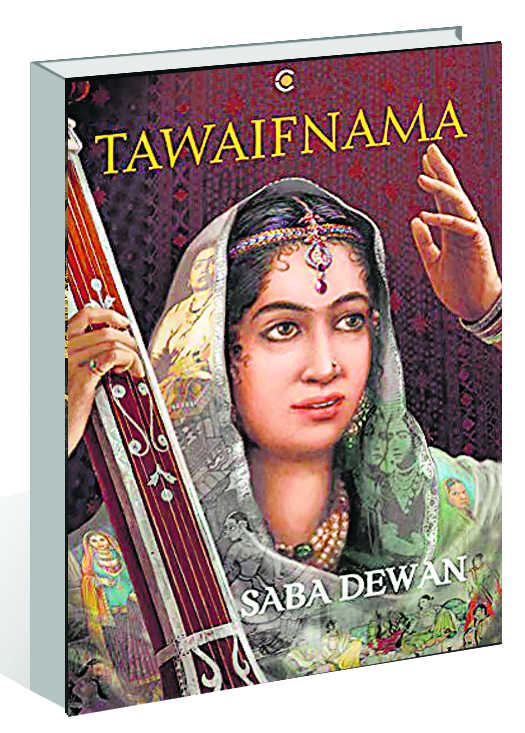
Tawaifnama by Saba Dewan. Westland. Pages 700. Rs 899
Amit Sengupta
In the times of one-dimensional cultures being imposed across the Hindi heartland, Saba Dewan’s pathbreaking book Tawaifnama celebrates the invisible history of tawaifs, courtesans, female singers of the classical traditions, musicians, artistes, lyricists and entertainers who enriched Indian culture.
In north India, almost until the mid 20th century, Benaras was the centre point and epical hub of literature and music for many decades. The tawaifs added a new dimension of beauty, aesthetics and performing arts using the distinctive musical style like the bol banao thumri and its associative genres such as hori, chaiti, kajri and dadra. Kathak, one of the most meticulously crafted dance forms in the region requiring great skill, practice and labour, was part of this tradition.
These performing artistes, singers, dancers, also many of them called tawaifs, played many roles in the pre colonial era. They were lovers to the local male elite, their companions, and artistic comrades. They also celebrated literature and politics “as well as knowledge of the intricacies of social etiquette and of erotic simulation…Feted as artists and lovers, elite tawaifs enjoyed access to high prestige and considerable wealth. Yet, their non-marital sexuality and the stigma attached to women who were in the public gaze, accessible to all, placed them on the margins of respectable society…”
It is said that Bharatendu Harsihchandra, a scion of the aristocratic merchant family of Benaras, an acclaimed playwright, poet and writer, glorified as the father of modern Hindi, has confessed that he visited tawaifs regularly so as to acquire the finesse and knowledge of the arts.
Saba Dewan traces the lives and memories of countless courtesans who have disappeared, turned invisible, or are now refusing to come out because of the social condemnations which have eliminated the great classical traditions of their performing arts as dancers, musicians, gayakis, gaanewalis, and connoisseurs of literature and aesthetics living in closed environment but celebrated by the elite and the intelligentsia of the times.
Her research as a filmmaker and writer began in 2002 and the book is a culmination of making endless rounds through the lanes and bylanes of Benaras and other forgotten town and mofussils of eastern UP and Bihar after finding nothing but dead ends. That is why her anonymous protagonist in this book is the main story teller and sutradhar connecting her to the family tree and the tree of many other tawaifs across the region who have either shifted paradigms or have chosen to disappear from the public gaze.
She traces her protagonist’s family to Bhabua in Bihar, their ancestral heritage and shelter from where they brought their great art and craft and erotic aesthetics as artists and companions into the lanes and bylanes of Benaras and its kaleidoscopic cultures. She traces the several branches of this tree, each woman and their identities and histories, and her chapters unfold into the many layers of buried time and rich tapestry, as if opening a door to a really exotic and brilliant museum.
As her protagonist says, “Benaras gave me my music, my profession, all the colours of my life. I tasted great success here as a tawaif, I experienced love, I became a mother in the city, and I also suffered my share of heartbreak and sorrow here. Benaras has made me the woman I am.” That is why Saba writes about the Benaras of the times through the eyes of the tawaifs as a city of temples and mosques, inner lanes of songs, love, and great art, small shrines dedicated to local sufi saints, crossroad memorials daubed with vermillion in memory of unknown pir babas who were warrior elders who protected communities across religion and caste. “And…hole in the wall altars lit with single lamp offerings to mais or mothers, turbulent autonomous goddesses that have thus far refused to be domesticated by Brahminical Hinduism.”



























